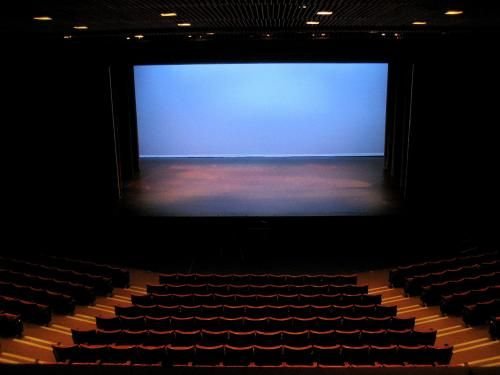
The Ultimate Cyclorama Stage Design Ideas for Modern Theaters
Cyclorama stages, commonly referred to as cycs, are a staple in modern theater design, providing a versatile and immersive backdrop that can transform the aesthetic of a performance. These stages are especially valued for their ability to create seamless, infinite backgrounds, making them indispensable in both theatrical and cinematic productions. In this comprehensive guide, we’ll explore the ultimate cyclorama stage design ideas for modern theaters, focusing on functionality, creativity, and technical excellence.
Understanding Cyclorama Stages
A cyclorama is a large, often curved, backdrop used to create the illusion of a boundless horizon. Traditionally made from canvas, modern cycs are now frequently constructed from more durable and flexible materials like muslin or even digital screens. The primary purpose of a cyclorama is to serve as a blank canvas that can be lit or projected upon to create various atmospheres and scenes.
Key Elements of Cyclorama Stage Design
1. Curved Backdrop
A signature feature of cyclorama stages is their curved backdrop. This curvature eliminates shadows and harsh lines, creating a smooth transition between the floor and the backdrop. For modern theaters, investing in a seamless, curved design is crucial. The curvature should be gentle enough to blend the floor and the background, providing an uninterrupted visual flow.
2. White or Light-Colored Surface
Cycloramas are typically painted white or a very light color to maximize their versatility. This neutral base allows for the application of different lighting and projections to achieve a wide range of effects. High-quality paint or fabric should be used to ensure uniformity and prevent any unwanted textures or marks that could disrupt the visual continuity.
3. Proper Lighting
Lighting is the most critical aspect of cyclorama stage design. To achieve the best results, consider the following lighting techniques:
- Even Illumination: Ensure the entire surface of the cyclorama is evenly lit to avoid shadows and dark spots. Use soft, diffused lighting for a consistent appearance.
- Color Washes: Utilize colored lights to transform the cyc into different environments. LED lights are particularly effective due to their wide range of colors and easy controllability.
- Front and Rear Projections: For dynamic backgrounds, incorporate projectors. Rear projection can be especially useful as it prevents the actors’ shadows from being cast on the screen.
4. Integration with Stage Elements
To make the most of a cyclorama, it should be seamlessly integrated with other stage elements. This includes:
- Set Pieces: Ensure that set pieces blend smoothly with the cyc, enhancing the illusion of depth and space.
- Flooring: The stage floor should match the cyc’s surface in color and texture to maintain the illusion of an infinite backdrop.
Creative Cyclorama Stage Design Ideas
1. Digital Cyclorama Screens
Modern theaters are increasingly adopting digital screens as cycloramas. These LED screens offer unparalleled flexibility, allowing for high-definition video projections that can change instantly. Digital cycs can display anything from a realistic cityscape to abstract art, providing endless creative possibilities.
2. Themed Backgrounds
For specific productions, consider designing cycloramas that reflect the theme of the show. For example, a production set in outer space could have a star-studded cyc with subtle lighting changes to simulate the movement of stars. Custom painting or printed backdrops can also be used to create unique, show-specific environments.
3. Interactive Projections
Incorporate interactive technology to make your cyclorama respond to actors’ movements. Motion sensors and software can allow projections to change dynamically based on the action on stage, creating a more immersive experience for the audience.
4. Multi-layered Cycloramas
For a more complex visual effect, use multiple layers of cycloramas. By placing translucent fabrics at different distances from the audience, you can create a sense of depth and perspective. Lighting and projections on these layers can be manipulated independently to enhance the three-dimensionality of the stage design.
5. Textured Cycloramas
Although most cycs are smooth, experimenting with textures can add a new dimension to your stage design. Textured surfaces can catch light in interesting ways and add visual interest. This approach works particularly well for abstract or avant-garde productions.
Practical Considerations
1. Maintenance
Maintaining a cyclorama involves regular cleaning and touch-ups to ensure it remains pristine. For fabric cycs, gentle washing and occasional repainting may be necessary. For digital screens, regular calibration and cleaning will keep the display sharp.
2. Flexibility
Design your cyclorama to be flexible and adaptable. Modular components that can be easily reconfigured or expanded will allow your theater to accommodate different types of productions with varying requirements.
3. Budget
While a high-quality cyclorama can be a significant investment, it’s important to balance cost with functionality. Prioritize essential features like lighting and material quality, and consider phased upgrades to spread out the expense.
4. Technical Expertise
Ensure your technical team is well-trained in the use of cyclorama stages. This includes understanding lighting techniques, projection mapping, and maintenance routines. Investing in training will pay off in the long run by maximizing the potential of your cyclorama.
Conclusion
Cyclorama stages are a powerful tool in modern theater design, offering unmatched versatility and visual impact. By focusing on key elements like curved backdrops, proper lighting, and integration with other stage elements, you can create stunning, immersive environments. Embrace creative ideas such as digital screens, interactive projections, and textured surfaces to push the boundaries of traditional stage design. With careful planning and execution, your cyclorama stage can become a central feature of your theater, elevating every production to new heights.



